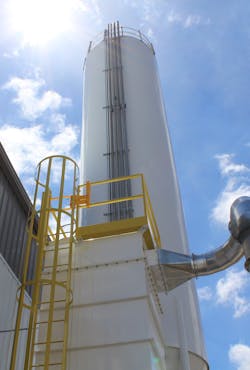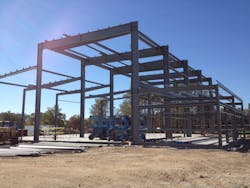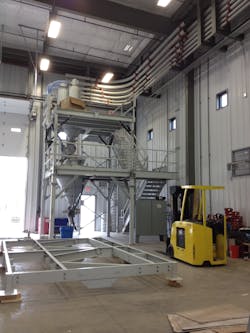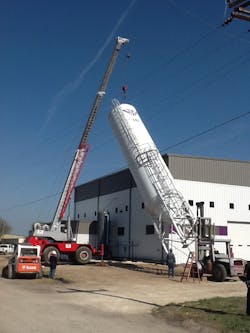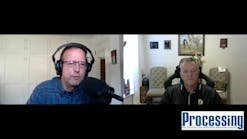Spending money to replace outdated or poorly functioning process equipment is often a good idea, but even the best ideas won’t succeed if you can’t get them approved by company decision makers. Providing financial justification for a project is the surest way to get company leaders on board with the purchase. This requires that you spend a little time upfront to estimate the project’s cost and benefits and then compare them to the current method to determine the return on investment (ROI) for the new equipment.
This article will provide advice on how to determine project costs and benefits to be used in financial calculations to convince decision makers of a project’s value to the company. If you are looking at more than one option, you can use this analysis to evaluate each option and determine which would be more beneficial.
While intended for project engineers and team leaders in any industry, these suggestions are broadly applicable to anyone trying to show financial justification for a project. Also, the ideas apply to any size project, from a $5,000 software purchase to the acquisition of a company worth millions of dollars.
Emphasize the benefits
To sell your idea, you must understand what is important to your boss and other decision makers and show how the project will benefit the company. Money, of course, is a big factor for every company. A publicly traded company has to show positive growth and return on capital to its shareholders. This means that money will be spent only if it can deliver a return in a short time period, often within a couple of years. At a small company, the owners will be spending their own money for a project, and you will need to convince them that it will pay off in the long run.
Financial payoff is the primary focus, but other factors can also be important, especially if monetary payoff alone isn't quite sufficient. These other project factors can include:
- Reducing safety risks, from back injuries to explosion hazards
- Reducing pollution, energy consumption, or other environmental impacts
- Reducing risk from product shortages, for example, by providing a backup supply for a critical ingredient
- Reducing corporate risk from shutdown, for example, by minimizing susceptibility to process shortages, hackers, or weather-related flooding, wind damage or power outages
- Improving product quality or customer experience, especially if it will increase sales or reduce complaints
- Improving employee morale and retention
- Providing company recognition or certification
- Providing greater flexibility of production or easier product changeovers
Estimate upfront project costs
The initial purchase price will get the most attention, and rightfully so, because it is probably the highest cost. Accordingly, while it takes work, negotiating the best price is worth the effort. Do not hesitate to seek negotiating help from procurement experts and project managers who have done it before.
It is also a good idea to evaluate less-expensive alternatives with lower investment costs, such as doing nothing, buying used equipment, choosing less-fancy options for your equipment or buying the product rather than making it in-house. You may find that one of these alternatives improves your chances of getting the money approved. Even if you do not choose those options, you will be prepared to show that you considered alternatives and had valid reasons for rejecting them.
In addition to initial purchase prices, you will need to include other upfront costs, such as shipping items to your site, site preparation, installation, additional utilities such as compressed air or steam, programming time, testing and checkout, and personnel training.
The sum of upfront costs is your capital expenditure, or CapEx. Your accounting group will spread the cost over many years in the form of depreciation to prevent the high CapEx from being a big financial burden in just the first year. However, depreciation typically does not affect whether a project gets approved or not.
Estimate annual savings
A primary reason for doing many projects is to reduce costs. If you hope to achieve annual savings from the project, then future ongoing costs will need to be considerably lower than current costs. Accordingly, you will need to calculate the operating cost for both the new and old methods to estimate the savings. Perhaps you want to replace an older process or equipment because it has become less reliable or more costly to operate. How do you calculate the annual savings?
First, consider any new ongoing costs, such as new maintenance, consumables, or licensing fees. Any new costs will need to be subtracted from the primary annual savings that will be discussed next.
Labor savings
If your project includes labor savings, remember to include the reduced cost of employee benefits and overhead. Hourly labor rates, including benefits and overhead, are often in the range of $110 to $150 per hour. Your personnel department can give you a rule-of-thumb figure for your company or department.
To estimate labor savings, you must accurately calculate the labor hours required for both the old and new methods. First, evaluate all labor associated with your current method of producing your highest-volume or highest-revenue products. Include operations personnel, maintenance, quality or inspections, housekeeping or dust removal, startup, process changeover, cleanout, programming, supervision and any other associated labor. Then, calculate the same labor aspects for the new process or equipment. Evaluate the difference, and then annualize it according to how much product will be made in one year. Finally, convert it to dollars by multiplying the number of hours by the labor rate, including benefits and overhead, as previously described.
If your new process will reduce cycle time, downtime, or setup time, or if you are switching from batch to continuous mode, then you will need to make the calculation based on an appropriate time period or product quantity so that the old and new methods can be accurately compared. As another example, perhaps new automation will allow operators to manage more processes simultaneously. In all cases, calculate the labor requirements of the new method and compare them to the requirements of the old method.
Keep in mind that you may get some hard questions regarding whether projected reductions in labor costs can actually be achieved. Be prepared with answers, such as how the company will be able to grow without adding more personnel, lose workers to retirement or attrition without needing to replace them, or achieve throughput goals with less overtime. Having good data and figures will help you make your case.
Other annual savings
Other significant potential savings include reduced energy costs if the new process is more efficient. Do not guess on these savings. Determine current energy usage and compare it to the energy use calculated for the new process. Obtain your site’s actual cost of electricity, in cents per kilowatt-hour, from your accounting group or local utility.
Your project may reduce material costs by minimizing loss or breakage, reusing off-spec material or improving quality so there is less scrap. In addition, providing better feeding accuracy of minor or micro-ingredients may reduce usage of expensive materials. In every case, calculate material cost for the new method and compare it to the old method to determine annual savings.
Alternatively, you may want to replace an old process or equipment that has become costly to keep running. This can be turned into an annual savings figure. First, ask your accounting department to determine the current repair and spare parts cost. Then calculate the parts and repair cost for the new method by talking to the equipment supplier or other users. A ten-year time period is often used for this purpose, since these costs may be nil during the warranty period but then increase over time.
On the other hand, you may want to replace a process or equipment that has become unreliable. Unplanned shutdowns, downtime, and product shortages can be extremely expensive. The cost may be easy to calculate if it is a standalone process or equipment. But if the process affects other downstream processes or production, you may need help calculating the overall cost.
Furthermore, if the new project will allow the company to standardize or increase the commonality of equipment through the plant, then calculate the savings of eliminating alternate spare parts from your inventory.
If the new equipment or process will produce less waste, remember to include savings associated with waste removal, EPA permit fees, rework, environmental inspections and the like.
Estimate profit from additional capacity
Another common reason for doing a project is to increase throughput and revenue, leading to increased future profits. Sometimes this occurs simply because the project adds another line or speeds up the process. In other cases, production may increase because the new process reduces startup time, reduces changeover or cleanout time, or increases product flexibility. Eliminating a bottleneck can also boost production volume, even if it is a non-process aspect of production, such as reducing inspection hold-ups or adding a shipping dock.
In all these cases, increasing throughput will generally decrease the per-unit cost of labor, material and overhead, all of which can be calculated.
The calculation of savings is two-fold. First, the per-unit cost reduction can be applied to the current volume of any affected product, often resulting in substantial savings. In addition, incremental capacity over the present volume will give you an even bigger profit, as long as you can use or sell the additional throughput. If you can sell more, then you can count all profit from the extra volume, not just the savings over the current cost.
Finally, if the project improves the quality of your product, your company may be able to demand a better sales price. Get input from your sales leaders or product managers to determine if that is the case.
Todd Smith has been manager of Kansas State University’s Bulk Solids Innovation Center since 2019 and is a member of Processing’s editorial advisory board. Previously, Todd spent 38 years in the bulk solids industry, first at DuPont, then as engineering manager at MAC Equipment (now Schenck Process), and then as general manager of Coperion K-Tron Salina and vice president of the company’s Global Systems Group. He earned a mechanical engineering degree in 1981 and an MBA in 1998, and he regularly lectures on all aspects of bulk solids handling.
